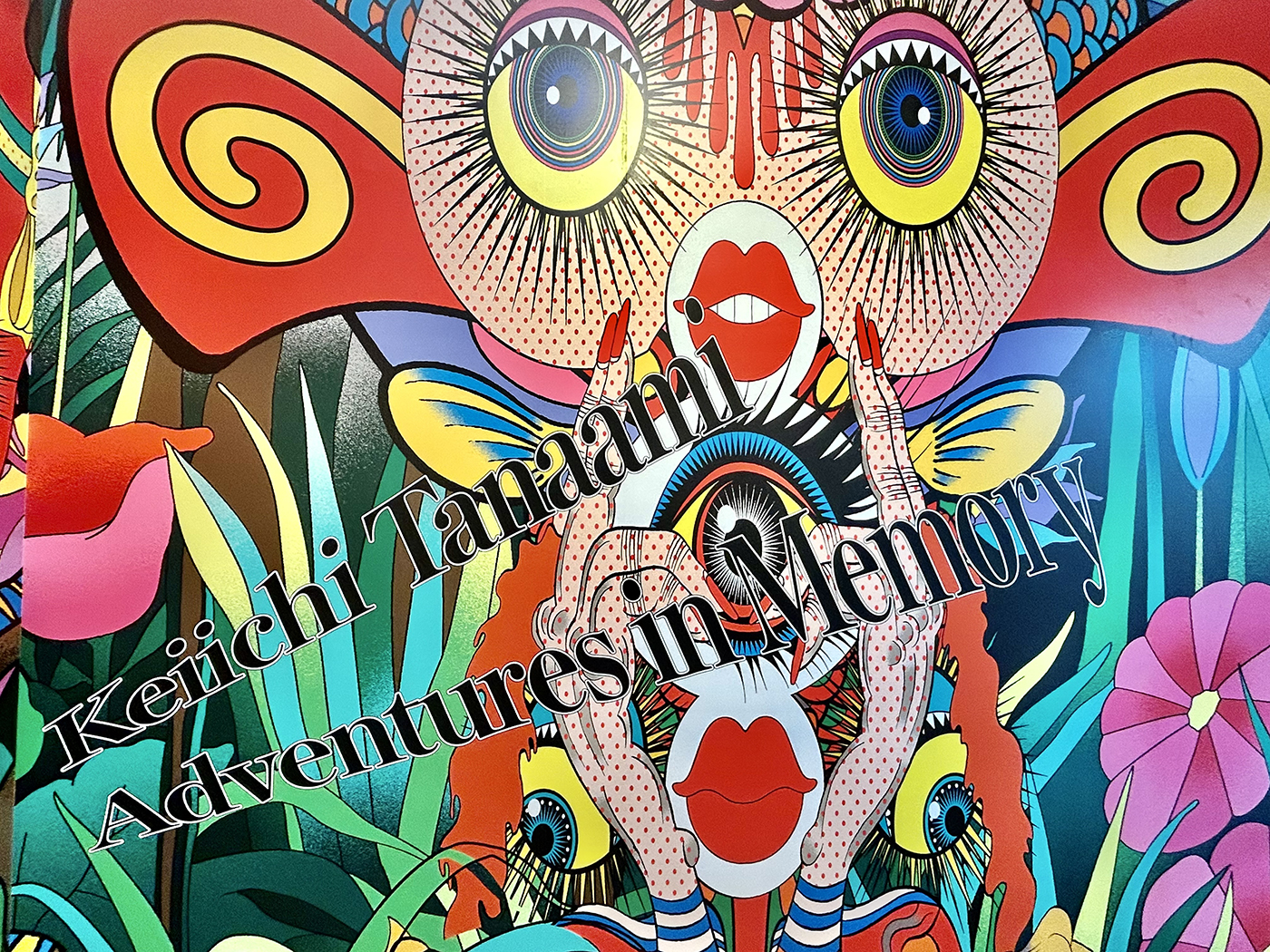KEIICHI TANAAMI: ADVENTURES IN MEMORY
HAPPENINGText: Alma Reyes
Like chromatic vignettes of a carnival or a thronged festival, no other form of art could possibly be as explosive and expansively imaginative as that of the enigmatic Keiichi Tanaami. Having lived through the colossal damages of World War II, Pop Art commercialism of the 1960s and 70s, and relentless media advertising surrounding Marilyn Monroe, Elvis Presley, The Beatles, and space exploration eras, Tanaami had literally spun the world of symbolism and imagery inside his own hallucinogenic universe of fantasy and profound human psyche. His international shows at Philadelphia Museum of Art, Tate Modern, Museum of Modern Art, Art Institute of Chicago, and more had recognized him as the Pop Art pioneer of Japan.

Keiichi Tanaami: Adventures in Memory exhibition entrance, The National Art Center, Tokyo. Photo: Alma Reyes
“Keiichi Tanaami: Adventures in Memory” is currently showing at The National Art Center, Tokyo until November 11 this year. The extravagant exhibition is the first major retrospective of the artist’s creative journey that had spanned more than sixty years. Tanaami’s sudden passing last August 9 sets the timely occasion to commemorate his precious legacy. Visitors should be prepared for a massive outburst of paintings, collages, sculptures, animation, installations, and video clips in wide spectrums and subject matter — all encapsulating the artist’s persona into three words: Dreams, Memories, and Hallucinations.

Paraventi: Keiichi Tanaami, Prada Aoyama, Tokyo, 2023 © Keiichi Tanaami / Courtesy of NANZUKA
The first room introduces Tanaami’s surreal approach to juxtaposing the boundaries between the secular and the sacred. A Hundred Bridges (2024), specifically created for this exhibition, presents two interpretations of the subject on bridges, which instill a vehement meaning for the artist. An eight-paneled folding screen presents red, undulating bridges intertwined around a myriad of magazine scrap collages, which reveal the artist’s grotesque and fantastical memories — a decapitated woman’s head, strange animals and sea creatures, and fighter planes, among others. The other work shows a 3.5-meter tall installation of multiple bridges done by projection mapping.

Keiichi Tanaami, A Hundred Bridges, 2024. Photo: Alma Reyes
Both pieces took inspiration from Hokusai’s “View of a Hundred Bridges” (1823) and “Severed Head” (1842), which implanted fear and mysticism in Tanaami’s mind. Illusions also arose from images in Hotel Gajoen in Meguro, Kameido Tenjin Shrine, and Soga Shohaku’s “Lions at the Stone Bridge.” He identified bridges with tragic separations, the connection between life and afterlife, and a riverbed space of theatrical entertainment, mysterious legends and infinite darkness. He remarked, “If the bridge is what divides this world from the afterworld, the border between the mundane and the divine, it must also be a place of meeting.”
Read more ...





